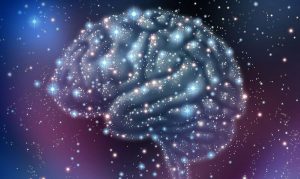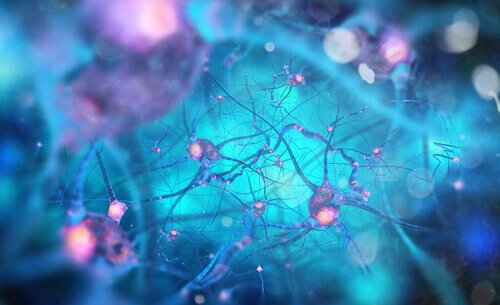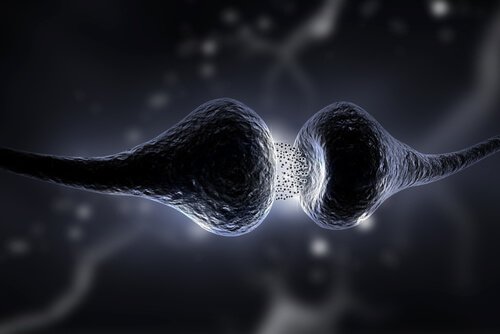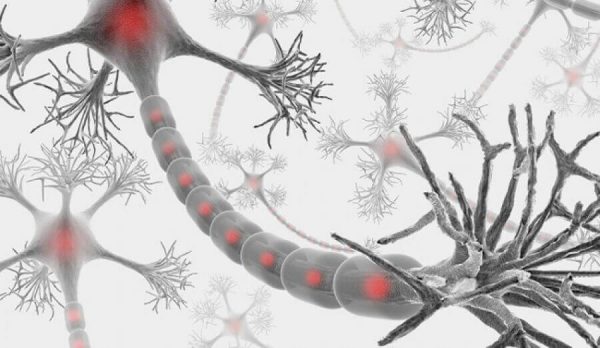Neurotransmitters: Types and Functioning

We’ve all heard about how neurons communicate with each other through electric impulses. It’s true that some of the synapses are purely electric, however, chemical elements mediate most of those connections. These chemical substances are called neurotransmitters. Neurons are capable of participating in several cognitive functions like learning, memory and perception thanks to them.
Nowadays, neuronal synapses imply more than a dozen of neurotransmitters. People have learned about the functioning of neurotransmission, leading to great improvements when it comes to designing and understanding the effects of psychotropic drugs. The most known neurotransmitters are: serotonin, dopamine, norepinephrine, acetylcholine, glutamate and GABA.
In this article, we’ll be exploring the following aspects in order to better understand the principles of neurotransmission. Firstly, knowing the different ways that neurotransmitters have when influencing the synapse. Secondly, we’ll talk about the signal transduction cascade, which is the most common way in which neurotransmitters work.

Types of effects of neurotransmitters
The main function of neurotransmitters is to modulate the synapse between neurons. That way, electric connections become more complex, resulting in more possibilities. Many functions of the nervous system would if neurotransmitters didn’t exist and neurons acted like simple wires.
The way that neurotransmitters influence neurons is not always the same. Chemical effects alter synapses in two different ways – here we have the two types of effects:
- Through ion channels: The possibility of a difference between the exterior and the interior of the neuron produces electrical impulses. The movement of ions (electrically charged particles) causes that differential to vary and the neuron to be triggered when reaching the threshold of activation. Some neurotransmitters have the function of sticking to ion channels found in the neuron’s membrane. When they latch on, they open this channel, allowing a greater movement of ions, causing the neuron to be triggered.
- Through a metabotropic receptor: This is a more complex modulation. Here, the neurotransmitter latches onto a receptor found in the membrane of the neuron. However, this receptor isn’t a channel that opens or closes, instead, it produces another substance inside the neuron. When sticking to the neurotransmitter, the neuron releases a protein inside of it, changing its structure and functioning. In the next section, we’ll be exploring this type of neurotransmission in depth.

The signal transduction cascade
The signal transduction cascade is the process by which the neurotransmitter modulates the functioning of a neuron. In this section, we will focus on the functioning of those neurotransmitters that do so through metabotropic receptors, since it is the most common way in which they operate.
The process consists of four different phases:
- The first messenger or neurotransmitter: Firstly, the neurotransmitter latches onto the metabotropic receptor changing its configuration, now allowing it to fit with a substance called G protein. The junction of the receptor with the G protein induces the release of an enzyme on the inner side of the membrane, causing then the release of the second messenger.
- The second messenger: The second messenger is the protein that releases the enzyme linked to the G protein. Its mission is going through the neuron until finding a kinase or phosphatase. These substances activate when the second messenger attaches itself to either one of them.
- The third messenger (kinase or phosphatase): This varies depending on whether the second messenger encounters a kinase or a phosphatase. The encounter with a kinase will cause it to activate and release a process of phosphorylation in the nucleus of the neuron, which will cause the DNA of the neuron to start producing proteins that it previously didn’t. However, if the second messenger encounters a phosphatase, it’ll have the opposite effect: it will inactivate the phosphorylation process and stop the creation of certain proteins.
- The fourth messenger or phosphoprotein: When the kinase activates, it sends a phosphoprotein to the neuronal DNA in order to trigger the phosphorylation. The phosphoprotein will activate a transcription factor that will trigger the activation of a gene as well as the creation of a protein; this protein, depending on its qualities, will release several biological responses that will end up modifying the neuronal transmission. When the phosphatase is activated, it destroys the phosphoprotein, causing the phosphorylation process to stop.

Neurotransmitters are very important chemicals in our nervous system. They’re in charge of modulating and transmitting information between the different brain nuclei. Also, their effects on neurons can last from a few seconds to months, or even years. Thanks to their study, we can understand the correlation of many complex cognitive processes, such as learning, memory and attention.
We’ve all heard about how neurons communicate with each other through electric impulses. It’s true that some of the synapses are purely electric, however, chemical elements mediate most of those connections. These chemical substances are called neurotransmitters. Neurons are capable of participating in several cognitive functions like learning, memory and perception thanks to them.
Nowadays, neuronal synapses imply more than a dozen of neurotransmitters. People have learned about the functioning of neurotransmission, leading to great improvements when it comes to designing and understanding the effects of psychotropic drugs. The most known neurotransmitters are: serotonin, dopamine, norepinephrine, acetylcholine, glutamate and GABA.
In this article, we’ll be exploring the following aspects in order to better understand the principles of neurotransmission. Firstly, knowing the different ways that neurotransmitters have when influencing the synapse. Secondly, we’ll talk about the signal transduction cascade, which is the most common way in which neurotransmitters work.

Types of effects of neurotransmitters
The main function of neurotransmitters is to modulate the synapse between neurons. That way, electric connections become more complex, resulting in more possibilities. Many functions of the nervous system would if neurotransmitters didn’t exist and neurons acted like simple wires.
The way that neurotransmitters influence neurons is not always the same. Chemical effects alter synapses in two different ways – here we have the two types of effects:
- Through ion channels: The possibility of a difference between the exterior and the interior of the neuron produces electrical impulses. The movement of ions (electrically charged particles) causes that differential to vary and the neuron to be triggered when reaching the threshold of activation. Some neurotransmitters have the function of sticking to ion channels found in the neuron’s membrane. When they latch on, they open this channel, allowing a greater movement of ions, causing the neuron to be triggered.
- Through a metabotropic receptor: This is a more complex modulation. Here, the neurotransmitter latches onto a receptor found in the membrane of the neuron. However, this receptor isn’t a channel that opens or closes, instead, it produces another substance inside the neuron. When sticking to the neurotransmitter, the neuron releases a protein inside of it, changing its structure and functioning. In the next section, we’ll be exploring this type of neurotransmission in depth.

The signal transduction cascade
The signal transduction cascade is the process by which the neurotransmitter modulates the functioning of a neuron. In this section, we will focus on the functioning of those neurotransmitters that do so through metabotropic receptors, since it is the most common way in which they operate.
The process consists of four different phases:
- The first messenger or neurotransmitter: Firstly, the neurotransmitter latches onto the metabotropic receptor changing its configuration, now allowing it to fit with a substance called G protein. The junction of the receptor with the G protein induces the release of an enzyme on the inner side of the membrane, causing then the release of the second messenger.
- The second messenger: The second messenger is the protein that releases the enzyme linked to the G protein. Its mission is going through the neuron until finding a kinase or phosphatase. These substances activate when the second messenger attaches itself to either one of them.
- The third messenger (kinase or phosphatase): This varies depending on whether the second messenger encounters a kinase or a phosphatase. The encounter with a kinase will cause it to activate and release a process of phosphorylation in the nucleus of the neuron, which will cause the DNA of the neuron to start producing proteins that it previously didn’t. However, if the second messenger encounters a phosphatase, it’ll have the opposite effect: it will inactivate the phosphorylation process and stop the creation of certain proteins.
- The fourth messenger or phosphoprotein: When the kinase activates, it sends a phosphoprotein to the neuronal DNA in order to trigger the phosphorylation. The phosphoprotein will activate a transcription factor that will trigger the activation of a gene as well as the creation of a protein; this protein, depending on its qualities, will release several biological responses that will end up modifying the neuronal transmission. When the phosphatase is activated, it destroys the phosphoprotein, causing the phosphorylation process to stop.

Neurotransmitters are very important chemicals in our nervous system. They’re in charge of modulating and transmitting information between the different brain nuclei. Also, their effects on neurons can last from a few seconds to months, or even years. Thanks to their study, we can understand the correlation of many complex cognitive processes, such as learning, memory and attention.
This text is provided for informational purposes only and does not replace consultation with a professional. If in doubt, consult your specialist.







